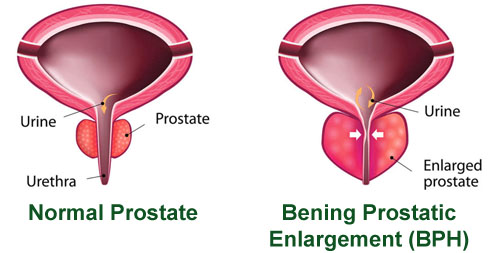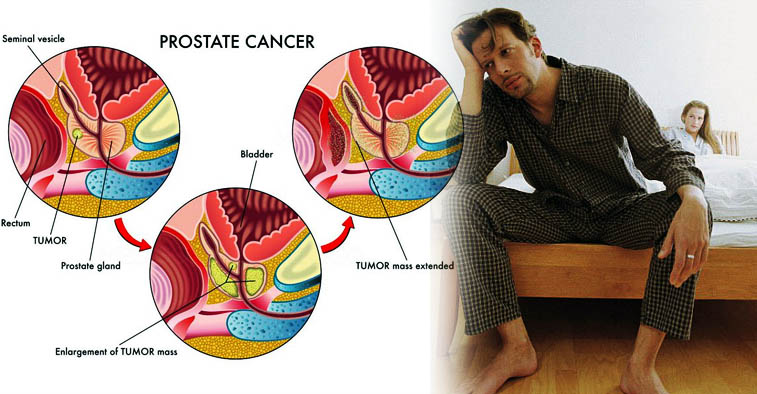The prostate gland is part of the male reproductive system located underneath the bladder and in front of the rectum. The prostate gland produces fluid for semen. It is about the size of a walnut and weighs about an ounce.
Read: Penile Implant Surgery in India
WHAT IS BENIGN PROSTATE CONDITION OR BPH?
BPH is a noncancerous enlargement of the prostate gland that can affect men as they get older. BPH is common. Men between ages 45and 80 are prone to BPH.
It can manifest with urinary symptoms or be asymptomatic. It is important to seek treatment early for this condition because if left untreated it can lead to urinary retention and poor bladder and kidney function.
WHAT ARE SYMPTOMS OF BPH?
- difficulty starting to urinate,
- a weak urinary stream,
- increased frequency of urination, every 1 to 2 hours, mainly at night.
- leakage of urine,
- incomplete emptying of the bladder,
- retention of urine.
- Needing to stop and start urinating several times
- Trouble starting to urinate
- Needing to push or strain to urinate

CAUSES OF ENLARGED PROSTATE OR BPH
The causes of enlarged prostate or BPH are not well understood. As per a few studies and on the basis of many patients treatment, factors related to aging and family history may cause BPH. Some factors like obesity, lack of activeness, and erectile dysfunction might increase risk.
Read: Prostate Cancer and Erectile Dysfunction Treatment in India
HOW IS PROSTATITIS DIAGNOSED?
- Personal or family history
- A physical exam
- Cystoscopy to look at the urethra or bladder with a scope
- Post-void residual volume– an ultrasound measuring the urine left in the bladder after urinating
- PSA- a blood test to rule out prostate cancer
- Ultrasound of the prostate
- Urinalysis(urine test)
- Uroflowmetry to measure the urine flow
- Urodynamic pressure to test pressure in the bladder during urinating
- A urinary blood test to screen for bladder cancer
WHAT ARE THE TREATMENT OPTIONS FOR BPH?
First line treatment for BPH is dietary and lifestyle modification. If these fail to improve symptoms then medical therapy can be started. Medications can either help shrink the prostate gland or help relax the prostate and bladder. If medical therapy is ineffective, there are surgical options from which the patient may benefit.
Minimally Invasive Surgeries and Interventions that ARE NOT recommended
- Prostate Artery Embolization (PAE): Experimental treatment option without proven results. PAE is a new procedure for treating BPH and since PAE is new and still being tested, little is known for sure about how well it works and what side effects it may cause.
- Transurethral Needle Ablation (TUNA)
SURGERY
When medical therapy fails or when BPH symptoms are severe, surgery can be done to remove obstructing prostate tissue. The following types of surgeries can be performed for BPH:
- Transurethral Incision of the Prostate (TUIP)
- Photoselective Vaporization of the Prostate (PVP)
- Transurethral Resection of the Prostate (TURP)
- Holmium Laser Enucleation of the Prostate (HoLEP)
- Thulium Laser Enucleation of the Prostate (ThuLEP)
- Transurethral Electrovaporization of the Prostate (TUVP)
- Transurethral Water–Jet Ablation
Read : Urethroplasty Surgery in India
TRANSURETHRAL RESECTION OF THE PROSTATE (TURP)
It is carried out in General anesthesia.
The Urologist inserts a thin, tube-like instrument called as a resectoscope through the tip of the penis into the urethra. The resectoscope has a light, a thin wire loop, and valves for irrigating fluid. An electrical current is passed along the wire, which is used by the Urologist to cut away prostate tissue that is blocking the urethra and seal blood vessels. The removed tissue is flushed into the bladder and then out of the body from there.
This treatment is well known for its long-term outcomes.
No incisions (cuts) are needed.
The hospital stay is 1 to 2 days.
HOLMIUM LASER ENUCLEATION OF PROSTATE (HOLEP)
In HoLEP, the Urologist places a resectoscope through the penis into the urethra. A laser is passed through the resectoscope destroying the enlarged prostate tissue.
- No incisions (cuts) are needed.
- Hospital stay required is one day.
- There is a very little bleeding.
- Faster recovery.
- This treatment is carried out under general anesthesia.




